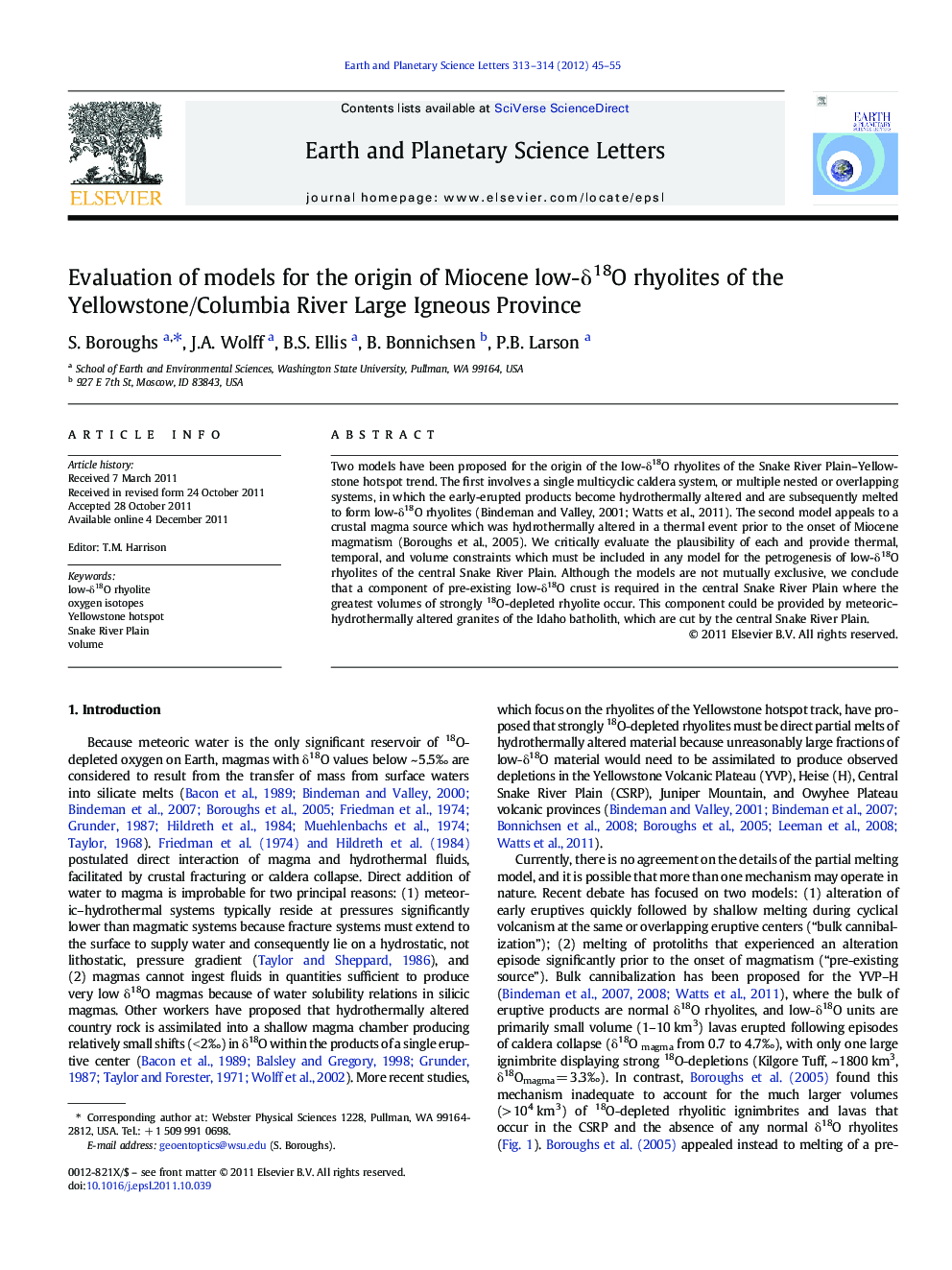| Article ID | Journal | Published Year | Pages | File Type |
|---|---|---|---|---|
| 4677666 | Earth and Planetary Science Letters | 2012 | 11 Pages |
Two models have been proposed for the origin of the low-δ18O rhyolites of the Snake River Plain–Yellowstone hotspot trend. The first involves a single multicyclic caldera system, or multiple nested or overlapping systems, in which the early-erupted products become hydrothermally altered and are subsequently melted to form low-δ18O rhyolites (Bindeman and Valley, 2001; Watts et al., 2011). The second model appeals to a crustal magma source which was hydrothermally altered in a thermal event prior to the onset of Miocene magmatism (Boroughs et al., 2005). We critically evaluate the plausibility of each and provide thermal, temporal, and volume constraints which must be included in any model for the petrogenesis of low-δ18O rhyolites of the central Snake River Plain. Although the models are not mutually exclusive, we conclude that a component of pre-existing low-δ18O crust is required in the central Snake River Plain where the greatest volumes of strongly 18O-depleted rhyolite occur. This component could be provided by meteoric–hydrothermally altered granites of the Idaho batholith, which are cut by the central Snake River Plain.
► We describe the oxygen isotopes and volumes of Miocene Snake River Plain rhyolites. ► We compare two differing models for the origin of low δ18O rhyolites. ► Magmatic cannibalization doesn't adequately model Miocene rhyolite characteristics. ► Magmatic cannibalization adequately models < 6 Ma Yellowstone Hotspot rhyolites. ► A pre-existing low δ18O source is likely required for Miocene rhyolite production.
